The Dawson Proa Construction Method Part 2
Part 2 of Topher Dawson’s report on constructing his proa SGIAN GHLAS.
See Part 1. -Editor
Main Hull Construction Sequence - Part 2
See photos above.
- Side/seat joints filled, glassed, rounded, glassed.
- Centre section bulkheads extended upwards to support a foredeck which is needed to support each mast.
- Seat back panels modeled with a skeleton structure of plastic conduit pipe.
- Panels made of 25mm foam and glassed.
- Panels laid on seats and lashed together with cable ties and hot glue.
- Joints filled, glassed, rounded and glassed.
- Foredeck foam cambered while it only has the lower layer of glass.
- Gunwale foam applied with hot glue, edge set as it went on.
- Rudder shaft boxes formed of foam and glassed in.
- Leeboard mounting reinforcements foam and glass.
- Leeboard construction has outer skins plus shear webs and foam within, plus hard filler round the bolt.
- Flat leeward side with foam on top.
- Internal shear webs over foam strips.
- Glass and filler.
- Final glass and flow coat.
- Install with cheek plate.
- The float hull was a half scale version of the main hull, and I did it first. Closing the deck panel on to the open hull is tricky as you cannot access the internal joint. I made 25mm square section strips of light rigid foam, rounded one corner and laid strips of wet glass over two faces of the strips. This messy structure was clamped to the inside of the top of the side panels by many bits of sliced plastic pipe. When it set it made a shelf on which to glue the top deck, and then round and glass the outer surface.
- This is the GRP bracket which connects with the float hull, showing a trial fitting before the decks went on. The central bulkheads and reinforcing can be seen.
- The float looks less boxy when sanded and flow coated.
- The noses were much the same construction and the attachment bolts were glassed in. Each nose has an inspection hatch and a drain plug, as any supposedly watertight compartment must have. They have the extreme ends as 75mm of solid foam with a thin coat of glass, as a sacrificial bumper.
The leeboard has quite high stresses, with the central bolt in tension and the water force pushing the board against a plastic strip fastened to the chine. To lift the float hull plus 100kg of ballast water plus the crew sitting in the ww side of the main hull, the board needs to be generating about 3kN of force, about 300kg. This means there will be about a ton of tension in the bolt which needs to be dissipated through the panels.
It seems to work, because in a gust I have lifted the float without breaking anything.
Tricast 5 has a very smooth surface which allows a pretty good finish as long as roving or cloth are laid on chopped strand mat while still wet. If CSM is laminated and allowed to set, the finish is rough.
I bought a full face mask (JSP Powercap Active) with an integral fan, battery and filter as I was making a lot of toxic dust. I have no connection to the company but it was light, effortless to wear, good field of vision, no condensation and very reassuring in a dusty environment. It was expensive at £340 but worthwhile.
Summary
I do think the radiused joints open up possibilities to people used to plywood construction.
When I was young, plywood boats used to have chine logs and stringers held in shape by elaborate temporary or permanent frames. Builders went to great pains to get clear long pieces of timber to make these but in fact, all they were were glue chocks. At the time this was much lighter than traditional clinker or carvel. It took several inventive steps to get to true monocoque with stitch and glue, such as the Mirror dinghy.
Schacht designs are very attractive because the designer has paid attention to the aesthetics. Sheer, rocker and flare do make an attractive boat. My boat offends the eye in a number of ways apart from being a proa, but I was persuaded that Rob Denney has correctly worked out that rocker, flare and sheer are not in fact productive in a long thin sealed hull.
Sheer and flare keep an open hull dry but if sealed, one can accept the ends submerging as long as they re-emerge. The straight profile makes it pretty easy to form the shape. It also damps out pitch, making the sails more efficient and the motion easier.
I’d say anything which can be made of plywood could also be made of foam/glass without the maintenance problem, with a clean smooth interior and integral buoyancy. The sealed tank ventilation/rot problem in ply boats is also solved. The downside is the materials are less pleasant to work with, and need precautions.
Even if all its compartments were flooded, SGIAN GHLAS would always have over 500kg of buoyancy from roughly 10 sq m of 15mm foam and 15 sq m of 25mm foam. Even if it is upside down it will float!

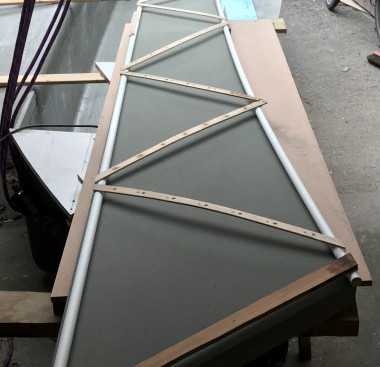
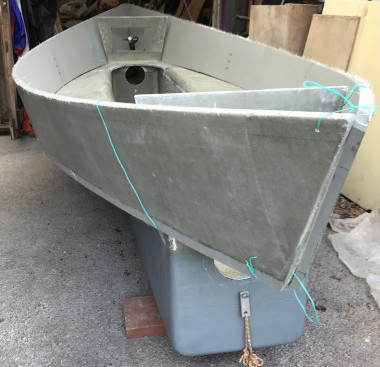




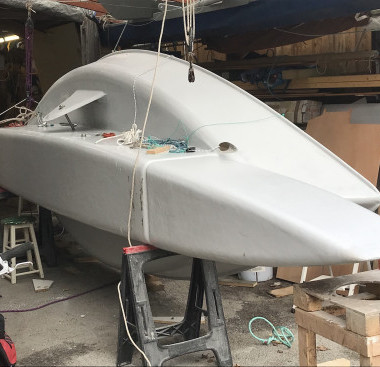


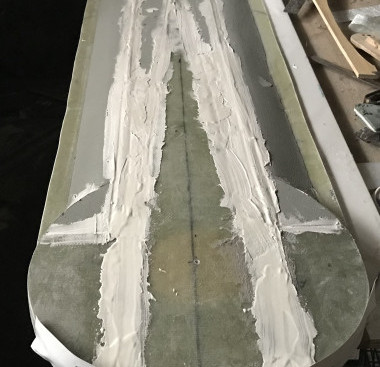
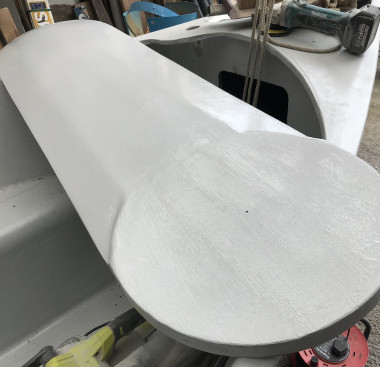


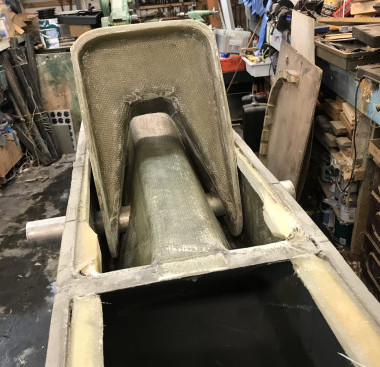
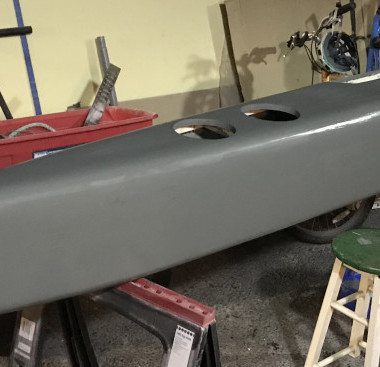
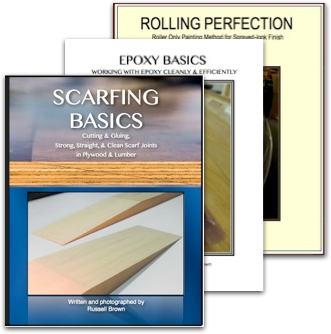
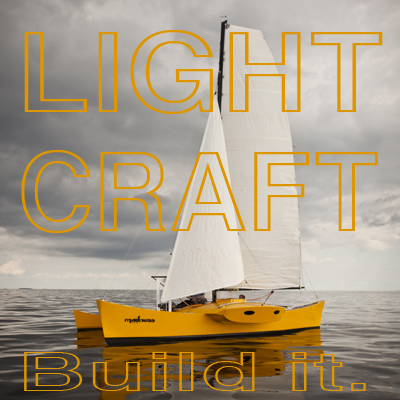
What you N American folks might not know is that Topher Dawson is a highly respected professional traditional boatbuilder here in the UK, who always has ways of doing things in an innovative and often unconventional way.
I didn’t now till reading this that he had built a proa but am delighted that he has and it doesn’t surprise me in the least. The last project of his I read about was a fixed seat competition rowing skiff that just happened to be a catamaran.
It strikes me that Topher’s concept is not without precedent; the Solomon Island proas had a semi submersible Vaka and the crew level was elevated by several feet above it. See https://www.pinterest.com/tomedom/a-shunting-proa-image-library/solomon-islands-vaka-of-taumako/
Of course, their water was not cold like Topher’s.